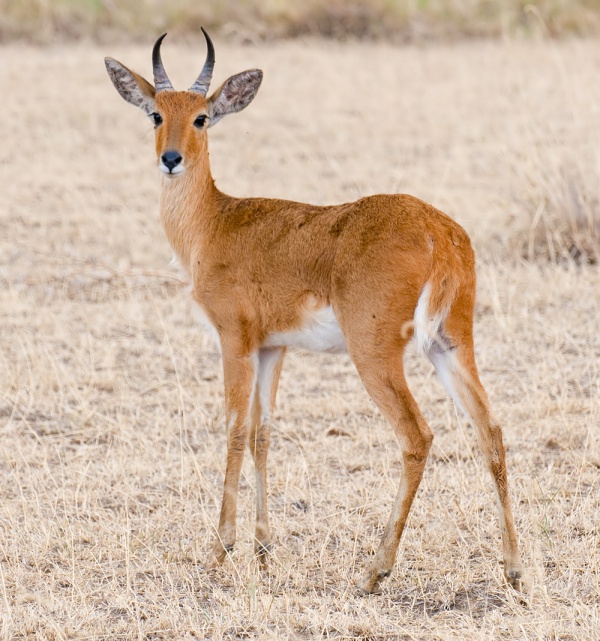Facts About Bohor reedbuck
The bohor reedbuck is a medium-sized antelope native to central Africa. It belongs to the Redunca genus within the Bovidae family and was first described by Peter Simon Pallas in 1767. There are five subspecies of this antelope, each distinguished by unique physical traits. Males are easily recognizable by their horns and yellow to grayish-brown coats, and they are also larger than the females.
These antelopes are herbivores, primarily consuming grasses and tender reed shoots rich in protein. They require access to water and have flexible social structures, often forming large groups during the dry season.
Males reach reproductive maturity at around 3-4 years old, while females are ready by their first year. Mating peaks during the rainy season, and after a gestation period of about 7.5 months, a single calf is born. The calf is then nursed for 8-9 months.
Bohor reedbucks inhabit moist grasslands, swamplands, and woodlands across various African countries. However, they face threats from habitat loss and hunting. Despite these challenges, the species is currently listed as Least Concern by the IUCN, with an estimated population of over 100,000.
Bohor reedbucks display unique behaviors such as whistling and bounding. They primarily feed on grasses and reeds and are preyed upon by lions, leopards, and crocodiles. These antelopes also host several parasites and have distinctive features such as horns and sebaceous glands.
Their habitat ranges from Senegal to Ethiopia, with most populations found in protected areas in eastern and central Africa. Conservation efforts are essential to address the threats they face and to ensure the survival of the bohor reedbuck.

 Mauritania
Mauritania